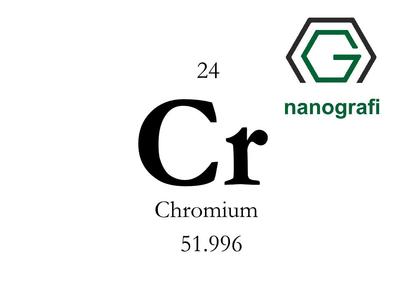Cr(Chromium) Nanoparticles
Chromium Metal and It’s Properties 

Chromium is a chemical element with symbol Cr and atomic number 24. It is the first element in group 6. It is a steely-grey, lustrous, hard and brittle metal which takes a high polish, resists tarnishing, and has a high melting point. Chromium is an element which is very useful and used in many different areas.
Nanoparticles of Chromium
There are too many different application areas where Chromium Nanoparticles can be used like in metallurgy, metal ceramics, in diamond tool manufacturing. Also for Chromium plating Chromium Nanoparticles are very useful and they give a shiny effect to the surface and also protect it. Nanopowder Chromium is a very hard metal. Therefore, in nanopowder form, Chromium can be widely used in applications where mechanical strength is required. Chromium Nanoparticles are used in ceramics, cutting and shaping tools and steel industry. In addition, Chromium Nanopowders are widely used as a catalyst.
You may reach Cr(Chromium) Nanoparticles 99.95%, 30-40 nm, metal basis from the link below:
You may reach Cr(Chromium) Nanoparticles 99.95%, 100 nm, metal basis from the link below:
Comments
Post a Comment